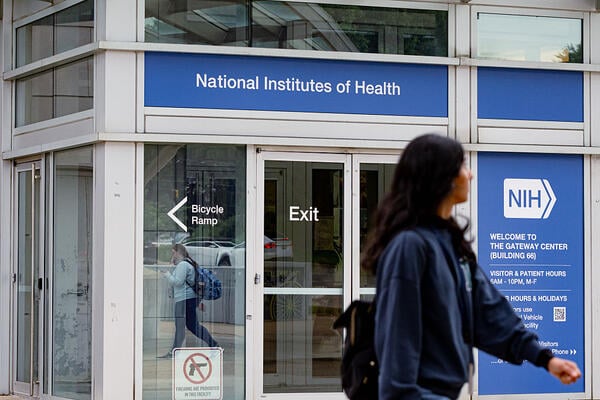
NIH to Limit AI Use, Cap Grant Applications at 6 per Year
The National Institutes of Health is telling researchers to limit the number of applications they submit and restrict how much they use artificial intelligence in writing their proposals.
The agency announced last week that it will accept no more than six “new, renewal, resubmission or revision applications” per principal investigator per calendar year. Principal investigators are the designated lead researchers for studies.
The announcement noted that the NIH has “recently observed instances of Principal Investigators submitting large numbers of applications, some of which may have been generated with AI tools,” adding that the use of such tools has enabled some P.I.s “to submit more than 40 distinct applications in a single application submission round.” Michael Lauer, who retired in February as the NIH’s deputy director for extramural research, said he had once seen this happen, Science reported.
The NIH won’t “consider applications that are either substantially developed by AI, or contain sections substantially developed by AI, to be original ideas of applicants,” according to the new policy—meaning researchers could lose funding over AI overuse. But it doesn’t define how much AI usage makes a submission “substantially developed by AI.”
“If the detection of AI is identified post award, NIH may refer the matter to the Office of Research Integrity to determine whether there is research misconduct while simultaneously taking enforcement actions, including but not limited to disallowing costs, withholding future awards, wholly or in part suspending the grant, and possible termination” of the grant, the policy says.
In an email to Inside Higher Ed, the NIH said, “As AI is becoming increasingly commonplace, it is reasonable to anticipate a potentially rapid increase in the use of AI in application development.” The agency said it wants to “mitigate the potential overload of its review systems.”
Still, the NIH said it expects relatively few researchers to be affected by the new restrictions.
“Only 1.3 percent of applicants submitted more than six Principal Investigator/Program Director or Multiple Principal Investigator applications in 2024,” the NIH wrote in the email. ”Collaborative submissions involving co-investigators or other senior/key personnel are not impacted by this Policy and will not be included in applicants’ six applications per year.”
While NIH didn’t mention it in the announcement, the cap on grant applications comes amid the Trump administration’s proposal to slash the agency’s funding by roughly 40 percent next fiscal year.
A faculty member at a public flagship who wished to remain anonymous for fear of harming her institution said she supports the new policy only if NIH’s budget isn’t cut. She already submits at least three applications annually, she said, noting that resubmissions count toward the cap of six. If NIH’s budget is slashed, getting funded will get harder, and “I might have to hit six,” she said.
“We’re going to lose a lot of labs—and probably my own, to be honest,” she said.
On Bluesky, Jason Moore, director of the Center for Artificial Intelligence Research and Education and chair of the computational biomedicine department at Cedars-Sinai, said there’s “always a few bad actors that ruin it for the rest of us.”
NIH says the new policy won’t apply to R13 conference grant applications or “T activity codes,” which include grants for purposes including undergraduate and graduate student training.

Source link


